In the whirlwind of staff departures that has characterized the first year and a half of the Trump administration, Marc Short’s recent announcement struck me as particularly noteworthy for a few reasons. Unlike many senior aides, Mr. Short has not drawn the ire of his boss via Twitter, nor does it appear that he is resigning under any pressure. Instead, his tenure has been marked by the passage of tax reform and the ability to maintain ongoing support among most congressional Republicans. Perhaps more importantly, however, his departure marks the further erosion of the most senior-level staff members within the Trump team.
To analyze the impact of Short’s impending departure, I relied on the National Journal’s series “Decisionmakers.” (Published at the beginning of each administration from Reagan through Obama, this special issue identifies the most influential aides to an incoming president.) An inventory of these many positions revealed that twelve were mentioned in every single edition (I call these “Tier One”), and presumably reflect the “crème de la crème” within the ranks of presidential advisers. This sub-sample includes the following positions: Chief of Staff, Deputy Chief of Staff, Press Secretary, Assistant to the President for Public Liaison, Assistant to the President for Legislative Affairs, Assistant to the President for Intergovernmental Affairs, White House Counsel, Staff Secretary, Cabinet Secretary, National Security Adviser, Deputy National Security Adviser and Chair of the Counsel of Economic Advisers.
Of these twelve positions within the Trump Administration, a full two-thirds have left the White House, and with the recent revelation that the Legislative Affairs Director, Marc Short, will be leaving this summer, 75 percent of the president’s most senior aides will have departed within the first 18 months of the administration. In some instances, a single position has turned over a full two times or more (e.g., Deputy Chief of Staff, Deputy National Security Adviser, and National Security Adviser). The three remaining Tier One aides within the Trump team are White House Counsel Don McGahn (who has reportedly threatened to leave), Cabinet Secretary Bill McGinley and the Chair of the Council of Economic Advisers, Kevin Hassett.
| Table 1: Tier One Turnover in the Trump Administration | ||||||
|---|---|---|---|---|---|---|
| Tier One Turnover | Name | Status | Date | Successor | ||
| Chief of Staff | Reince Priebus | Out | 7/31/17 | John Kelly | ||
| Deputy Chief of Staff | Katie Walsh | Out | 3/30/17 | Kirsten Nielsen, James Carroll, Zachary Fuentes | ||
| Press Secretary | Sean Spicer | Out | 7/21/17 | Sarah Sanders | ||
| Assistant to the President for Public Liaison | George Sifakis | Out | 7/31/17 | John DeStefano (interim), Justin Clark | ||
| Assistant to the President for Legislative Affairs | Marc Short | Summer ’18 | ||||
| Assistant to the President for Intergovernmental Affairs | Justin Clark | OUT | 3/13/18 | Douglas Hoelscher | ||
| White House Counsel | Don McGahn | |||||
| Staff Secretary | Rob Porter | Out | 2/7/18 | Derek Lyons | ||
| Cabinet Secretary | Bill McGinley | |||||
| National Security Adviser | Michael Flynn | Out | 2/13/17 | H.R. McMaster, John Bolton | ||
| Deputy National Security Adviser | KT McFarland | Out | 5/19/17 | Dina Powell, Nadia Schadlow, Mira Ricardel | ||
| Chair of the Counsel of Economic Advisers. | Kevin Hassett | |||||
Comparing President Trump’s Tier One turnover to the two most recent presidents provides additional context. In President Obama’s first term, he lost his White House Counsel in year 1 (Greg Craig) and then four additional Tier One staff members in year 2: Chief of Staff (Rahm Emanuel); National Security Adviser (James Jones), and Chair, Council of Economic Advisers (Christina Romer), while Deputy National Security Adviser, Thomas Donilon, was promoted to National Security Adviser. (Remember that turnover includes resignations, firings and promotions.) This represents 41 percent turnover after two full years.
| Table 2: Tier One Turnover During the First Two Years | ||||||
|---|---|---|---|---|---|---|
| Y1 | Y2 | Total | ||||
| Reagan | 17% | 42% | 59% | |||
| Bush I | 0% | 17% | 17% | |||
| Clinton | 25% | 33% | 58% | |||
| Bush II | 0% | 17% | 17% | |||
| Obama | 8% | 33% | 41% | |||
| Trump | 50% | 25*% | 75% | |||
*This figure incorporates Marc Short, who reportedly announced to his staff (during the week of June 15th) that he would be leaving in the summer of 2018. Data obtained through successive editions of National Journal’s “Decisionmakers” and various web sources.
President George W. Bush experienced even less turnover in his senior ranks and did not lose a single Tier One staff member in the first year, and during the entire second year, he lost two (or 17 percent): Cabinet Secretary (Albert Hawkins) and Legislative Affairs Director (Nick Calio). By comparison, President Trump has lost 75 percent of his Tier One aides within the first 18 months.
Why does it matter? These individuals are arguably the most influential in the United States government, affecting all manner of policy decisions in significant ways. Their proximity to the president coupled with their senior status allows for frequent opportunities to influence the chief executive. In addition, loss of staff at the highest level is highly disruptive as it often leads to additional departures at the junior level—a staff exodus (as well as morale killer) in key offices. Furthermore, filling these most senior positions is a more difficult task since many require specific expertise and experience, as well as passing the all-important loyalty test that President Trump prizes. As the administration ages, recruiting “the best and the brightest” will grow increasingly difficult—just as it has for prior presidents. The fear of big losses in the forthcoming midterms, the president’s willingness to disparage senior aides publicly, and a continuing sense of chaos that hovers over the White House (amongst other reasons), all work together to make the opportunity of working in the White House a less desirable one.
While previous research revealed record-setting turnover rates among senior staff more broadly, this analysis of the most senior level aides indicates that turnover has also surpassed that of the five previous presidents. President Trump appears to be his own best adviser, but the sheer magnitude of presidential responsibilities necessitates reliance on staff expertise and input. Retaining the expertise of trusted, reliable aides, like Marc Short, should be a presidential priority in the months ahead since the ongoing wave of departures will only serve to complicate and undermine the Trump agenda.
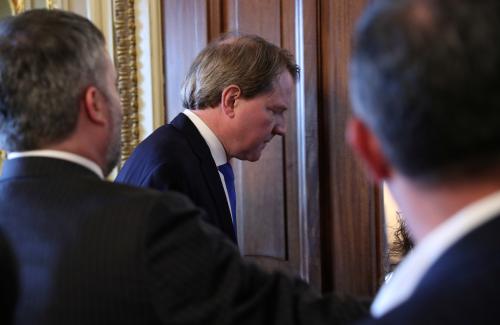
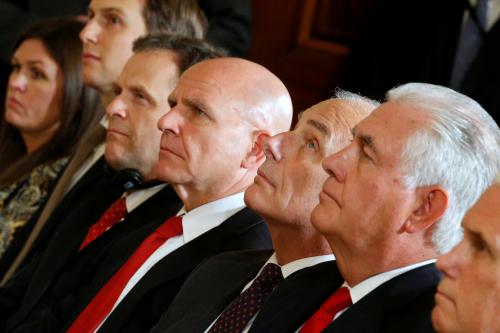
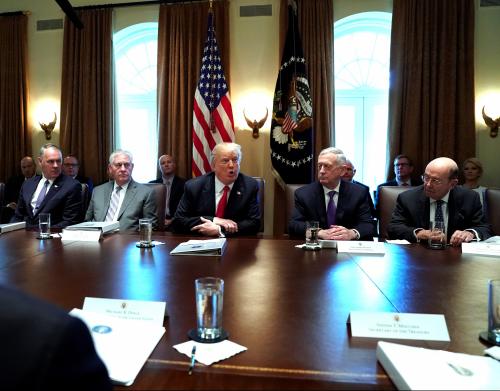
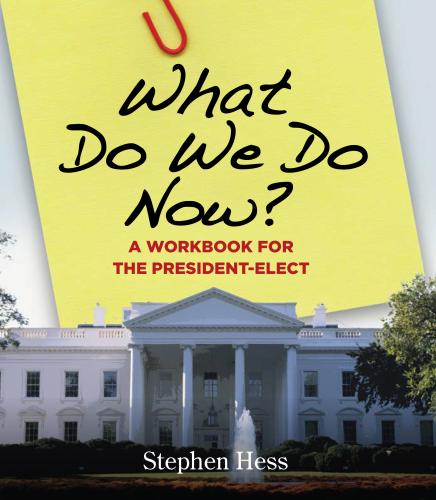


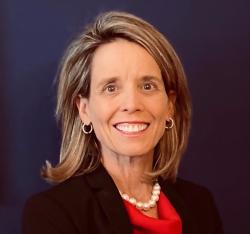



Commentary
With the revelation of Marc Short’s impending departure, President Trump has lost the vast majority of Tier One staff members
June 27, 2018